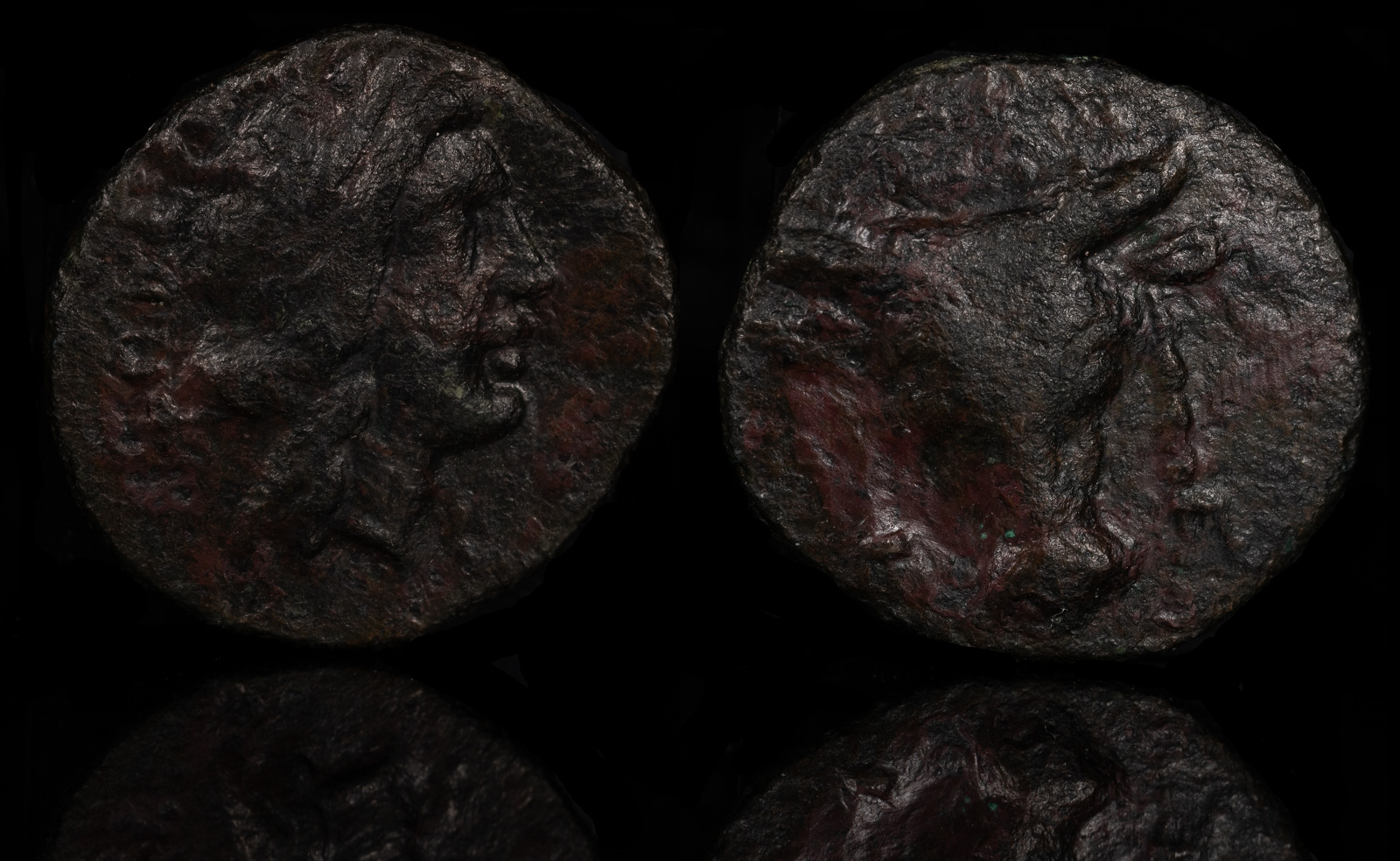
Phokis Elateia
Late 4th to early 3rd Century BCE
Ae 2.4g 17mm
Obv: FOKEWN; Wreathed head of Apollo right
Rev: Facing bull’s head, EL above
Ex Bargain Bin Ancients
Elateia was considered in ancient times to be the second most important place in Phokis after Delphi. Pausanias described it in depth, starting with the mention that it’s the second largest city after Delphi. He even mentions the sighting of numerous bustards along the road.
Per Pausanias, the Elateians managed to drive away Kassander in 301 BCE, though it was set fire during the earlier Persian invasion. They were originally Arkadians who settled in Phokis. When Philip II captured the city, it caused great alarm in Athens, who knew Philip’s goal was to control all of Greece.
Pausanias was particulary vivid in his description of the temple of Athene, including that the road there has a gentle incline. The priest of the temple was a boy before puberty, and they took care to ensure he would finish his time before maturity. Perhaps kids were different back then, because I know – had mine been given a priesthood at that age – there would have been some odd changes.
The bull on this coin is typical of Phokis. In terms of the image of Apollo, Pausanias makes no reference to a temple for him, but it seems from other cities that his worship was more common during the 4th and 3rd centuries, so perhaps that temple no longer existed during his time.
479 BCE
Philip II with Alexander III enters Phokis and seizes Elataia, then improves its fortifications.
Kassander attempts to take Elataia but fails.
Philip IV dies of tuberculosis in Elataia. Antipater I and Alexander V become kings.
Elataia is attacked and taken by the Romans.
Taxiles, a general of Mithridates VI, attempts to take Elataia but the city successfully resists. The Romans declare Elataia a free city in gratitude.